Before we move on to analyzing reports, there’s one more useful thing to do – building segments. As you already know, not everything is worth collecting and exploring. The clearer your data will be in the beginning, the better your reports will look.
Creating segments will help you organize data into smaller pieces of the whole. Instead of looking at all visits on your website, you’ll be able to see filtered visits. For example, you will see a group of new visitors, returning visitors or people from a particular country.
There are dozens of conditions by which you can define your segments. So before you build your first group, think about what data is most important to you. Remind yourself about the website goals and KPIs from your tracking plan and try to define groups of people you want to analyze separately.
Building segments for Clear Bank
To help you out, we’ll walk you through our example of Clear Bank. The first goal we’ve set for the Clear Bank’s website was to inform people well about the bank’s offer. Our KPIs were:
- The number of new visitors on pages with the offer.
- The number of pages with the offer viewed during one visit.
- The bounce rate for pages with the offer.
As we can see, these KPIs refer to the bank’s offer. The offer is presented on a few separate pages on the Clear Bank’s website. Each page describes one account feature, Benefits, Product Tour, No Fees, Savings, Security. The pages have different URLs and page titles and are grouped under the Product tab in the site menu.
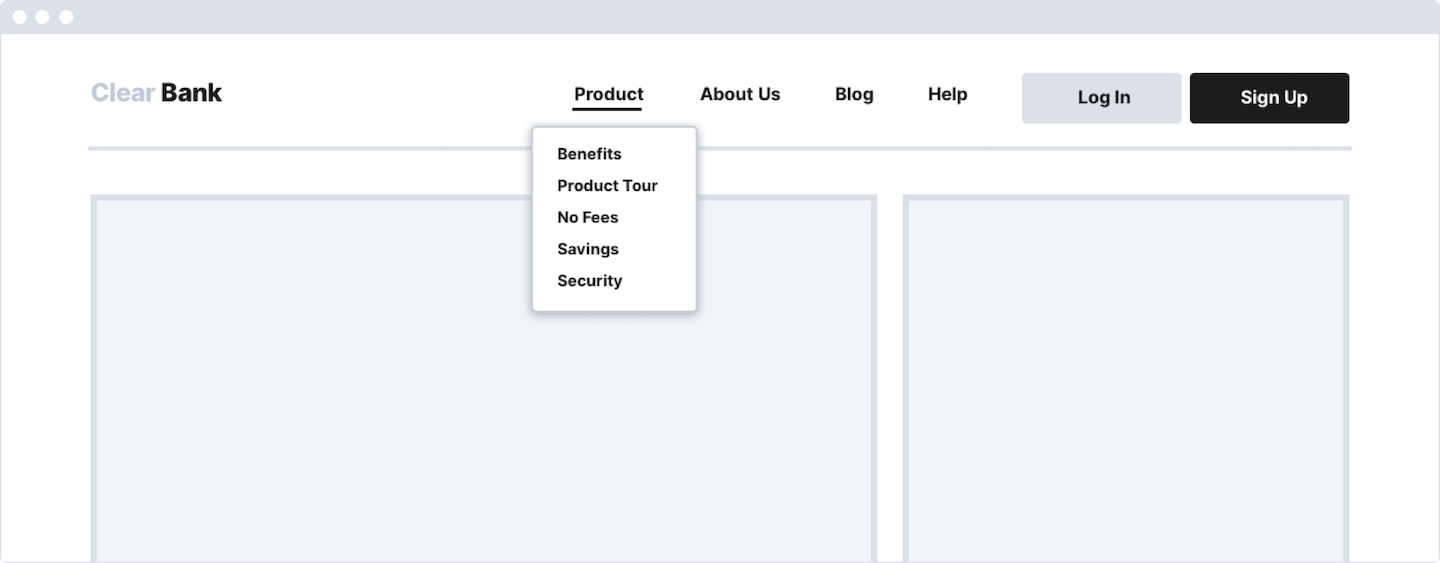
To quickly access analytical data for these pages, we can create a segment of people who visited them. Let’s see how to do it in Piwik PRO.
Set up a segment
To build a segment, follow these steps:
1. Go to Menu > Analytics.
2. The option to add segments appears at the top of any open tab (Dashboards, Reports, Custom reports, Goals or Ecommerce). Click the + button.
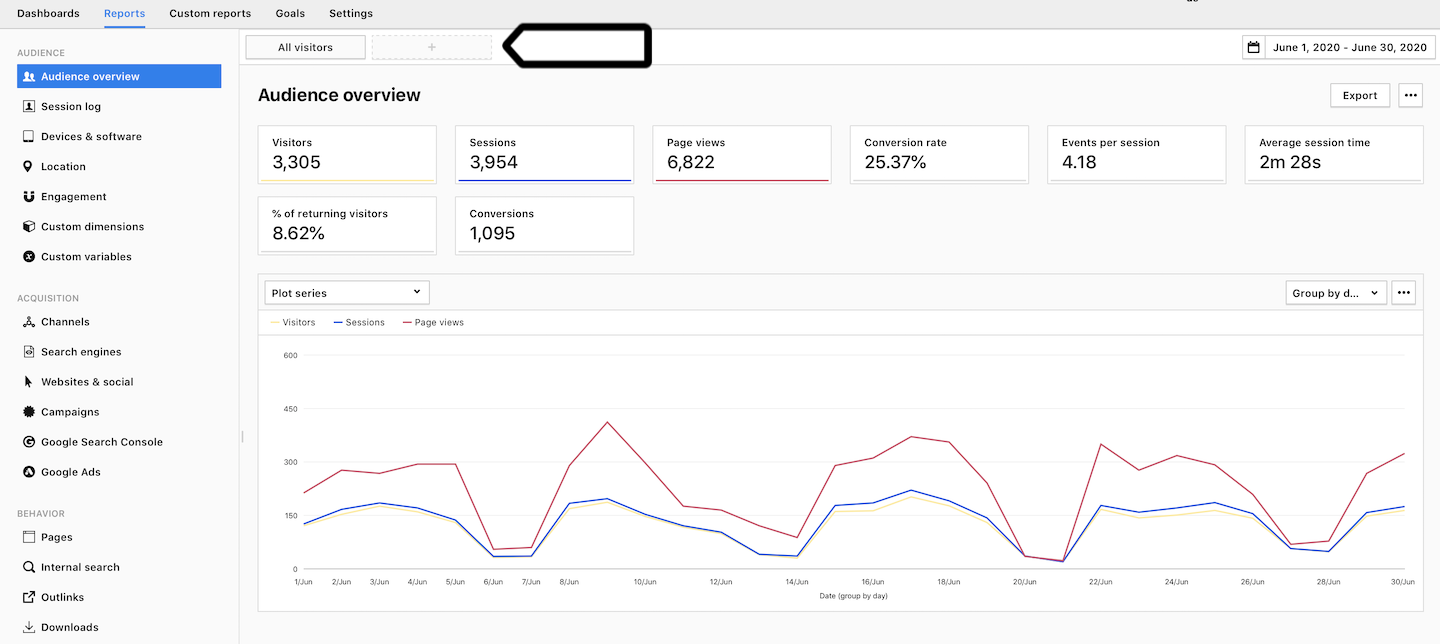
Note: You can also access segments in Menu > Analytics > Settings > Segments.
3. Click Manage segments.
4. Click Add a segment.
5. Name the segment.
6. In Visibility, choose Author or All users. All users lets you share this dashboard with your teammates.
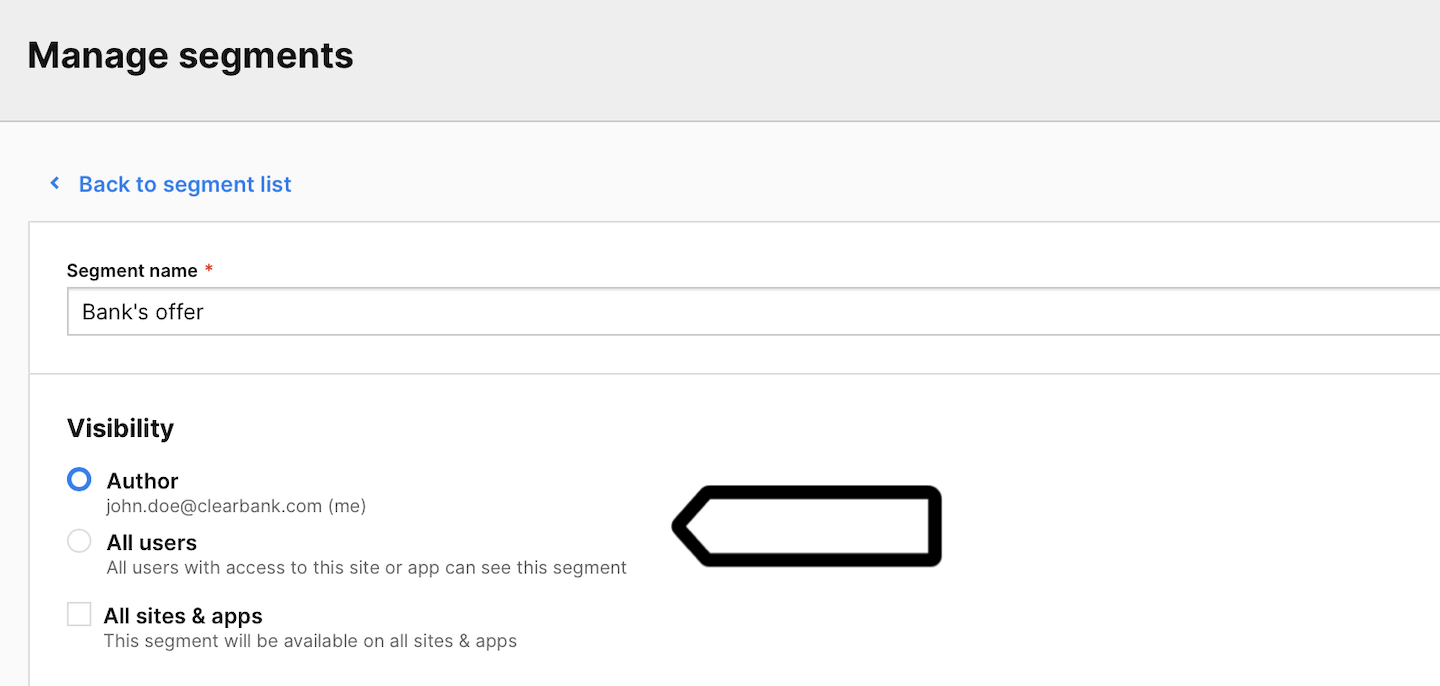
7. (Optional) Check All sites & apps to make this segment visible across all sites and apps.
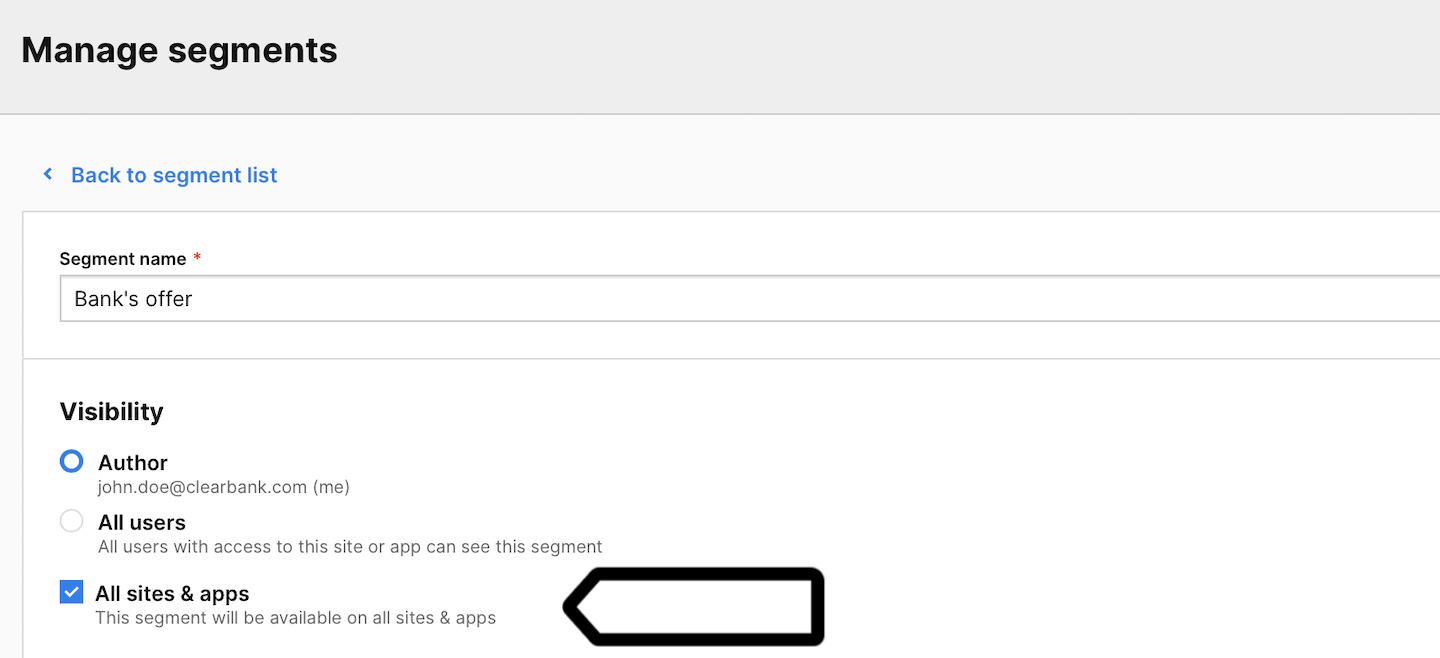
8. On the right, select the dimension you want to use and drag it into the drop-in field.

Tip: You can use the search engine to find dimensions.
9. Set a condition. Example: Page URL is https://clearbank.com/benefits/.

10. (Optional) Drag and drop more dimensions and set conditions. You can use AND and ORlogic operators in segment conditions.
11. When finished, click Save.
12. Click All visitors and pick your segment to apply it to reports.

13. All set!
From now on, you can easily access and use your segments on your data whenever you want. And if you need to create new segments, you can do so at any point during your analysis because they can be applied to historical data.
More segments
As we’ve mentioned a couple times, a detailed tracking plan will be your best friend in defining the segments you’ll need from the start. Looking back at our example tracking plan, our work defining segments isn’t quite done.
For Clear Bank, we would build a couple more segments. The second website goal was to invite people to open an account and we wanted to use the KPI:
- The number of people who started a signup process vs the number of people who visited pages with the offer.
We’ve already created the segment for the offer, so now we would build a segment for people who started a signup process. To do that, we could define a condition that the page URL is a page with the first step of the signup process. For example, Page URL is member.clearbank.com/signup/account.
If we follow the Clear Bank’s tracking plan, we would also define a segment for people who finished a signup process, people who started a login process and people who finished a login process. So, in the end, we would have five segments: Bank’s offer, Signup first step, Signup last step, Login first step and Login last step.
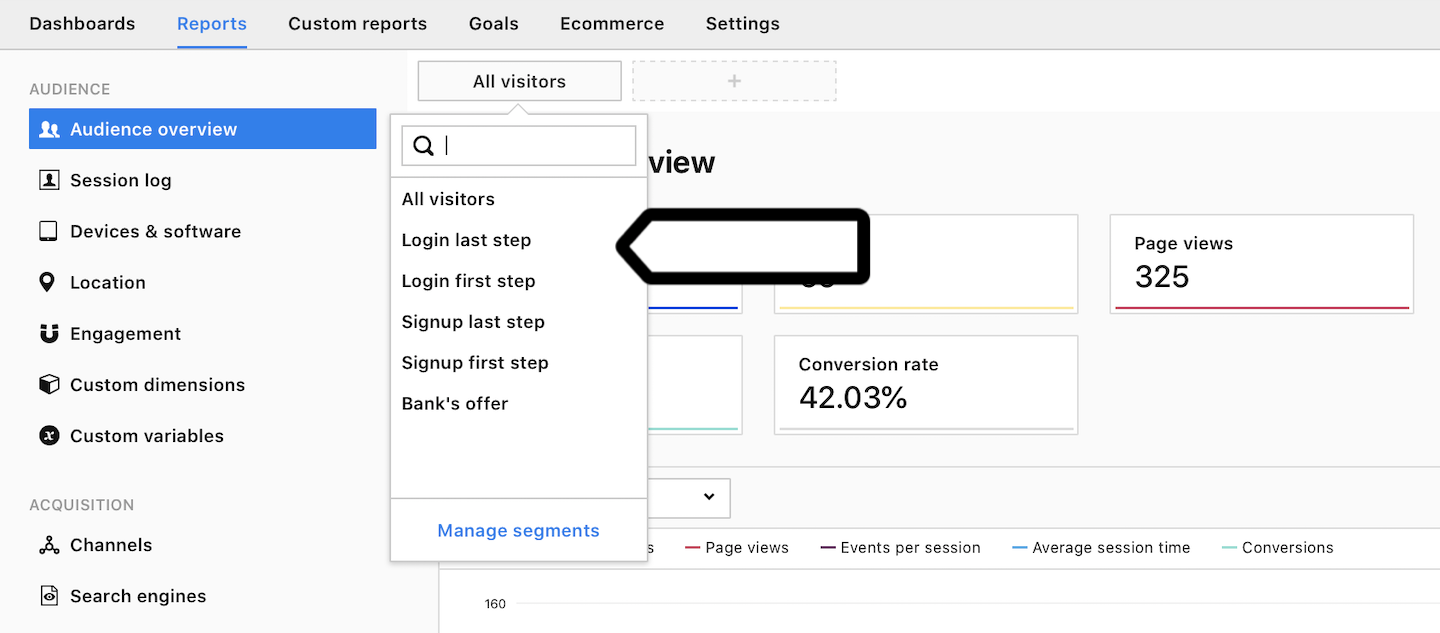
Using these segments, we can find the metrics for our KPIs quickly, analyze these groups of people separately or compare segments with each other.
Other ways to use segments
We’ve just shown you a few examples of segments, however, you may want to use different types of grouping. For example, you could use segments to analyze your paid and organic traffic. Or you could create a segment for pages with a 404 error, that will show you broken links. Or a segment with highly engaged visitors who filled in a contact form. It all depends on what you’re looking for in the data. So think it over and create segments most relevant for your website.
